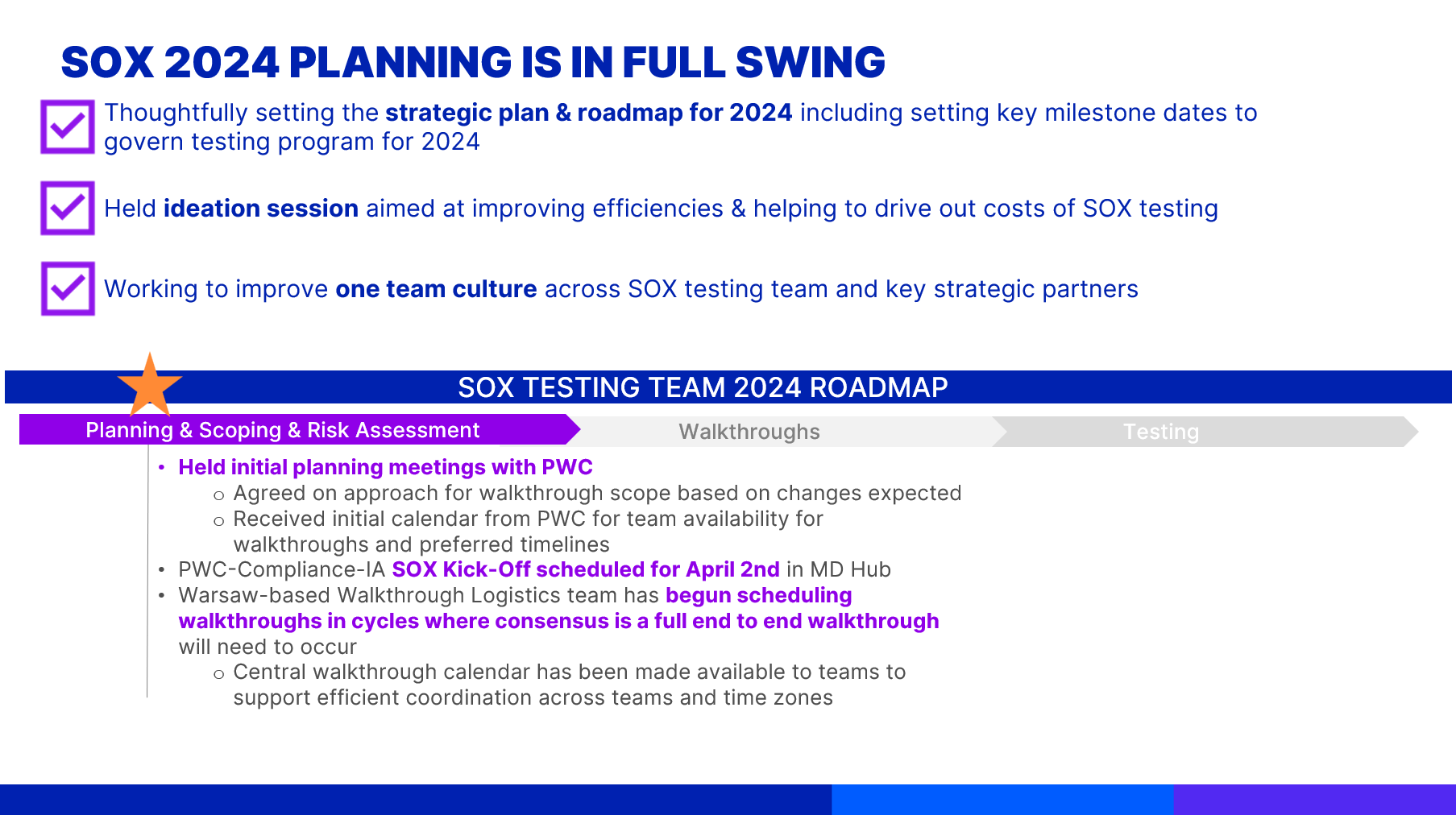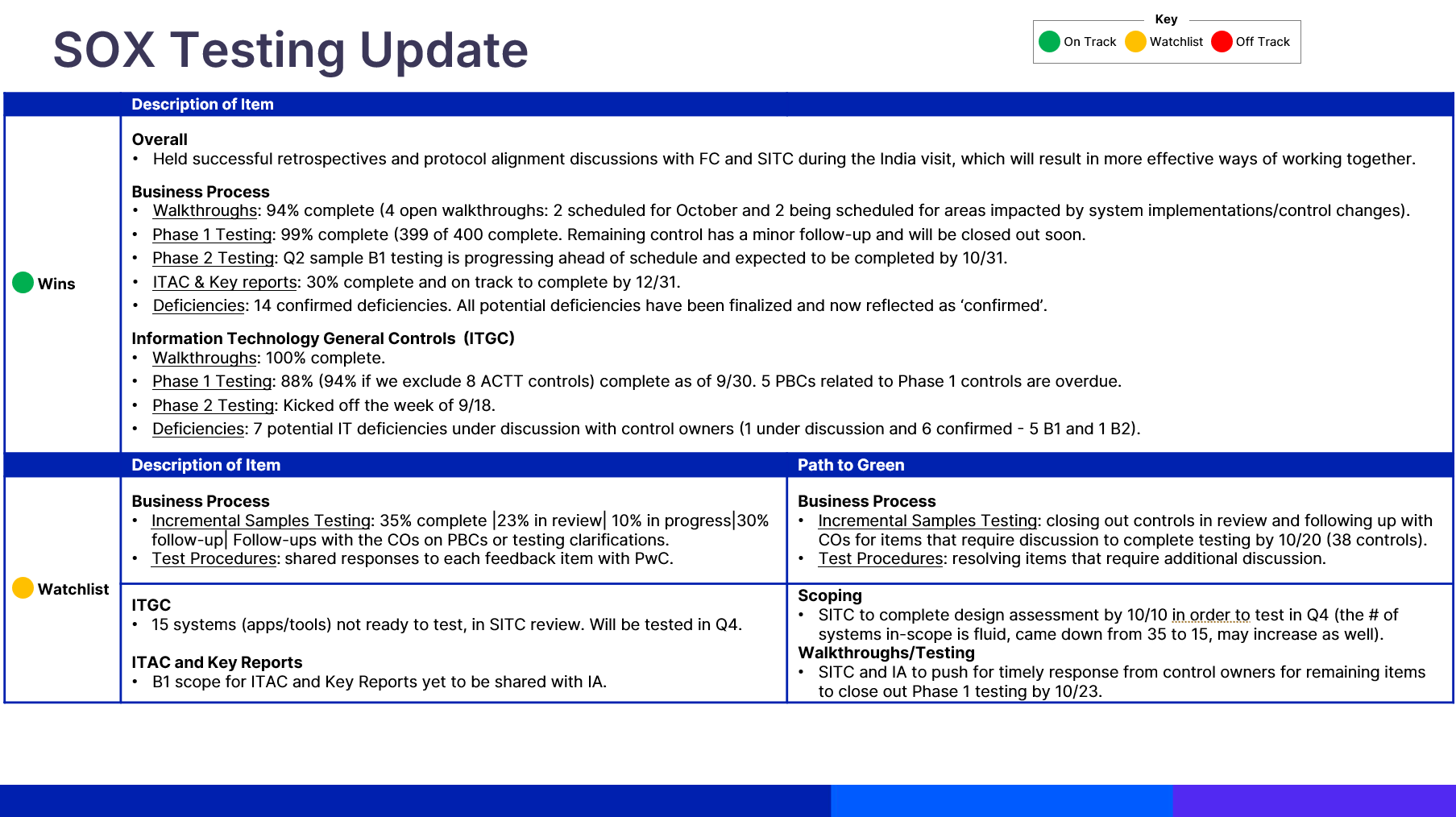
Program Leadership & Strategy
Strong programs require both clarity of vision and adaptability of execution. I have led complex initiatives through their full lifecycle: defining scope at a detailed level, aligning stakeholders, and driving consensus across teams to move workstreams forward with precision.
At the same time, I have transformed processes and systems to scale efficiencies, implementing cost-saving vendor strategies, building a Center of Excellence, and leading enterprise-wide transformations that strengthened compliance and operational performance.
This balance of structure and adaptability underscores my ability to deliver strategies that don’t just guide the business but propel its evolution.
The following work samples have been adapted and redacted from projects I led at various companies. Proprietary details have been removed and content is shared for illustrative purposes only.





